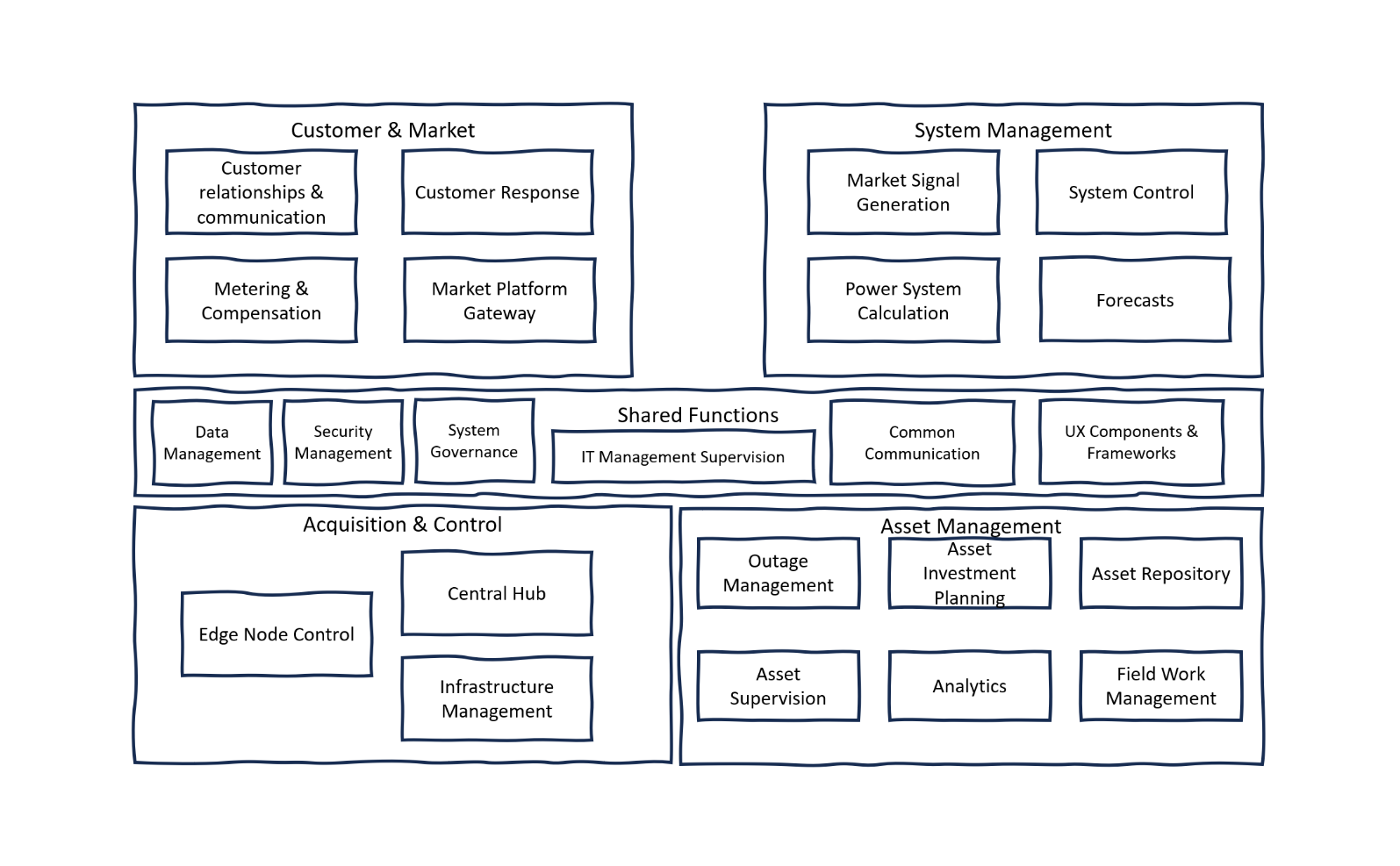energy reference architecture
Energy systems are complex systems! We can approach them from multiple perspectives. For example, life cycle, like power generation, transmission, distribution and consumption. Conventional vs. renewable, hardware vs. softwware... and so on. Therefore, I will categorize the building blocks by a reference architecture diagram.
Power System and EV charging are such entry points to dive further in!
what is a reference architecture?
A reference architecture is a standardized architectural model that serves as a blueprint or guideline for designing and implementing software systems, especially in complex domains. It outlines the recommended practices, patterns, and standards for a specific domain or type of application, ensuring consistency and quality across different implementations.
Power System Reference Architecture
High level reference architecture of a power systempower-system ref-architecture

Description
Overall, this architecture aims to provide a structured approach to managing the complex and interrelated components of a modern power system. It highlights the need for integration and communication across various domains to ensure efficient and reliable power delivery.
Sub-components:
Customer & Market: This area focuses on the interactions between the power system and its customers, as well as the market mechanisms. It includes managing relationships and communication with customers, understanding customer responses to market dynamics and power system changes, monitoring energy usage for accurate billing and compensation, and managing the market platform gateway, which covers aspects like bidding, pricing, and trading of energy. This comprehensive approach integrates customer interaction, response analysis, financial transactions, and market operations to ensure efficient energy market functioning.
System Management: This section relates to the overall management of the power system. It includes the generation of market signals based on activities such as price changes, control mechanisms for managing the power system's operation, calculations related to power flow and load distribution, and predicting future system needs, including demand and generation capacity. These elements are crucial for maintaining the balance and efficiency of the power system, ensuring stable operations, and planning for future requirements.
Shared Functions: These are services that support multiple aspects of the power system platform. It covers data management, involving the storage, processing, and analysis of data from the power system; security management, focusing on the cybersecurity and physical security of the infrastructure; system governance, which includes the rules and policies governing system operation; IT management supervision, overseeing the IT components supporting the system; common communication, referring to standard communication protocols and infrastructure; and UX components & frameworks, which are the user experience aspects, including interfaces for operators and customers. These elements are crucial for the efficient, secure, and user-friendly operation of power systems.
Acquisition & Control: This concerns the gathering and management of data and control signals throughout the power system. It includes Edge Node Control, which involves managing control points at the edges of the grid such as substations and smart meters; the Central Hub, which serves as the main control center for data acquisition and issuing control commands; and Infrastructure Management, which deals with overseeing the physical components of the power system infrastructure. These components are integral to maintaining a stable and efficient power grid, ensuring smooth operation and effective response to various demands and conditions within the power system.
Asset Management: This area involves managing the physical and digital assets of the power system. It includes Outage Management, which covers everything from detecting to restoring power outages; Asset Supervision, focusing on monitoring the condition and performance of power system assets; Asset Investment Planning, which involves strategic planning for future investments in assets; Analytics, used for analyzing data to enhance asset management decisions; an Asset Repository, for storing detailed information about assets, including specifications and history; and Field Work Management, which organizes and tracks maintenance and repair work on system assets. These components are essential for ensuring the reliability and longevity of power system assets and efficiently managing outages and maintenance activities.
